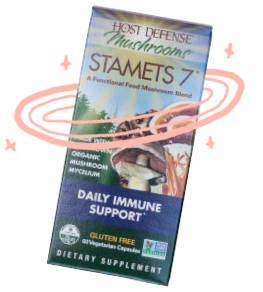By Paul Conrad, Member-Owner
In the beginning, there was Tabasco. Throughout most of the 20th century, supermarket shelves offered few other alternatives for folks that wanted more heat to their eats. But as diverse communities grew and thrived in this country, and as more eaters began sampling cuisines from all over the world, their palates were exposed to the distinctive burns of pepper sauces from Asia, Central and South America, and Africa that they may not have experienced before. Today, Tabasco Sauce shares the condiment shelf with hot sauces such as Thai Sriracha, Mexican Cholula, Korean Gochujang, as well as a selection of the hundreds of other hot sauces that have hit the market over the past couple decades.
Annual US hot sauce sales have passed the billion dollar mark after increasing 150% since 2000. There are hot sauces containing bourbon and other liquors, tropical fruits, green apples, blueberries, garlic, bacon flavoring, and on and on. There is, however, only one hot sauce made with kombucha, and People’s was the first store to sell it
Stinging Kombucha Hot Sauce was created by Portland chef Karel Vitek. For thirteen years, he and his wife Monka ran Tabor, a famed downtown food cart serving what Karel describes as Czech “grandmother” food, traditional goulash, stews, and dumplings. But as he was serving up food whose zingiest ingredients were black pepper and Hungarian paprika, Karel developed a taste for hot sauce. Starting with Tabasco, he kept searching for more and more heat, but while his taste buds craved the burn, his gut paid the price. Most hot sauces consist of roasted peppers and other ingredients in a vinegar base. As Karel’s palate developed an increasing tolerance for pepper heat, the unpleasant sour of the vinegar began to dominate.
More than a decade ago Karel began to experiment with kombucha as a hot sauce base. Kombucha is by far the most popular product in People’s Food Co-op’s beverage coolers, with 10 different brands and over 30 different flavors. These products all begin with sweetened tea fermented by a symbiotic culture of bacteria and yeast (SCOBY). Kombucha beverages are tangy, naturally effervescent, and are touted for their probiotic, antioxidant, anti-aging, and anti-inflammatory benefits.
Karel is definitely a kombucha believer and extols these benefits on the Stinging Kombucha website (kombuchahotsauce.com). But kombucha’s unique sweet/sour flavor and living nature are what inspired him to build his hot sauce around it. “A mature kombucha has about the same pH (acidity) as vinegar, but has sweetness and is less bitey and obtrusive. It doesn’t leave the sour aftertaste vinegar does,” Karel notes.
Since kombucha is a living, fermenting process, its sweet to sour ratio changes over time as its sugars are consumed. This gave Karel plenty of opportunity to experiment with different acidity levels. During the first year or so of the development process, it also left him with plenty of messes to clean up when early iterations of his recipe burst in the refrigerator as fermentation ran out of control.
After years of experimentation, he settled on a three-step fermentation process. First, ferment the kombucha to the point where just about all the sugar is digested and the culture is practically dormant. Next, revive the culture by adding a melange of four different carefully roasted hot pepper varieties and allow this mixture to ferment to near dormancy. Then, add the final ingredients, bottle the not-quite-finished product and chill it, allowing Stinging Kombucha Hot Sauce to continue a slow fermentation process while under refrigeration. It matures and develops more flavor and depth as it waits in your refrigerator.
What about those additional ingredients, eggplant and red-cabbage sauerkraut? The eggplant gives Stinging Kombucha Hot Sauce extra body so that it stays on your food rather than leaching through onto the plate. The sauerkraut is the result of further synergy.
“For years, some buddies and I have been having weekly get-togethers at The BeerMongers down on 12th and Division,” Karel recalls. “We drink beer and talk politics and whatever. Most evenings I’d bring in samples of the different recipes I was working on for the guys to try. They most always preferred the ones that had sauerkraut in them. It seems to bring everything together and seal the deal.”
And what a deal it is. The variety of peppers (serrano, habanero, cayenne and sweet chili) produce a complex flavor profile that changes as it lingers in your mouth. It’s a pleasant burn but not an inferno. Best of all, it won’t leave your taste buds blasted. It makes its statement and then subsides, leaving you still able to savor your dish. It augments without overpowering. As Karel says, “I believe the kombucha base gives the heat experience a soft landing.”
Dealing with a living product creates challenges for Karel’s growing business. The vast majority of hot sauces are shelf stable and inhabit the condiment section in the grocery aisles. Since Stinging Kombucha Hot Sauce must reside in the refrigerated section, it doesn’t get to grab the eyeballs of shoppers scanning the condiment shelf looking for a new flavor experience. Friends have suggested he cook his sauce down to stop fermentation and make it shelf stable. Karel won’t hear of it. He is passionate about his living, changing hot sauce.
Just how passionate is illustrated by the way Karel and family use Stinging Kombucha Hot Sauce at home. “We keep Stinging Kombucha in a small ceramic crock out on the kitchen counter,” Karel says. “It continues to ferment and gets fizzy and smells great and never tastes the same way twice.”
It’s hard to imagine a more vivid and flavorful example of a “living food.” Look for it in the refrigerated section at People’s, next to the kombuchas that inspired it.































